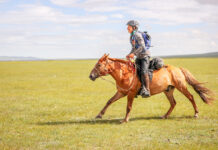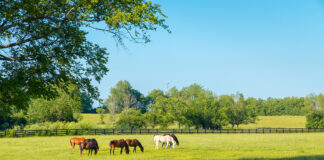These 7 tips for spring pasture maintenance will keep your horses grazing on beautiful, healthy grass all year long.
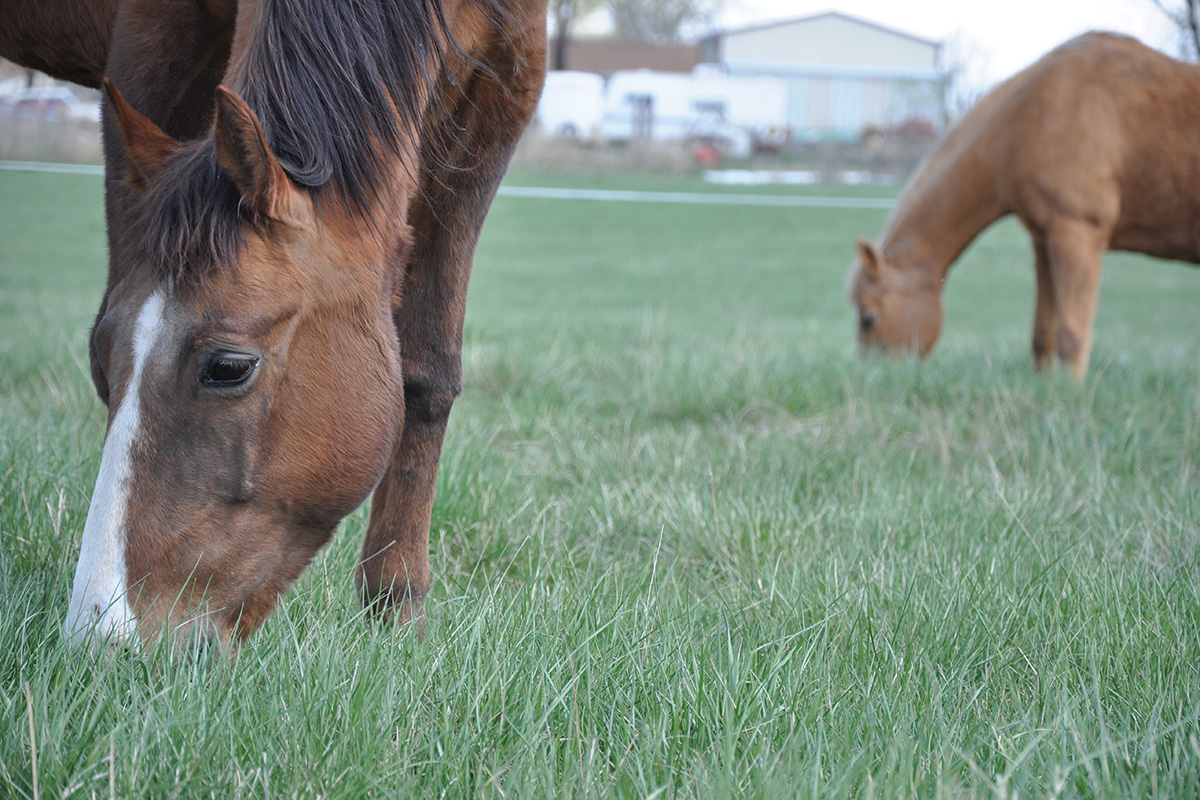
Here is some guidance for horse pasture maintenance to keep in mind at the start of grazing this spring.
1. Use a Confinement Area
You can greatly improve the health and productivity of your pastures by creating and using a paddock or heavy-use area for confining your horses. An enclosure, such as a corral, run, or pen becomes your horse’s outdoor living quarters.
Your horses should be confined here during the winter months when pasture grasses are dormant and not growing. In springtime, confine horses here when soils are still wet (more on this in a moment).
In the summer, use the confinement area to keep pastures from becoming overgrazed—never below 3 or 4 inches—and to keep your horses from becoming overweight.
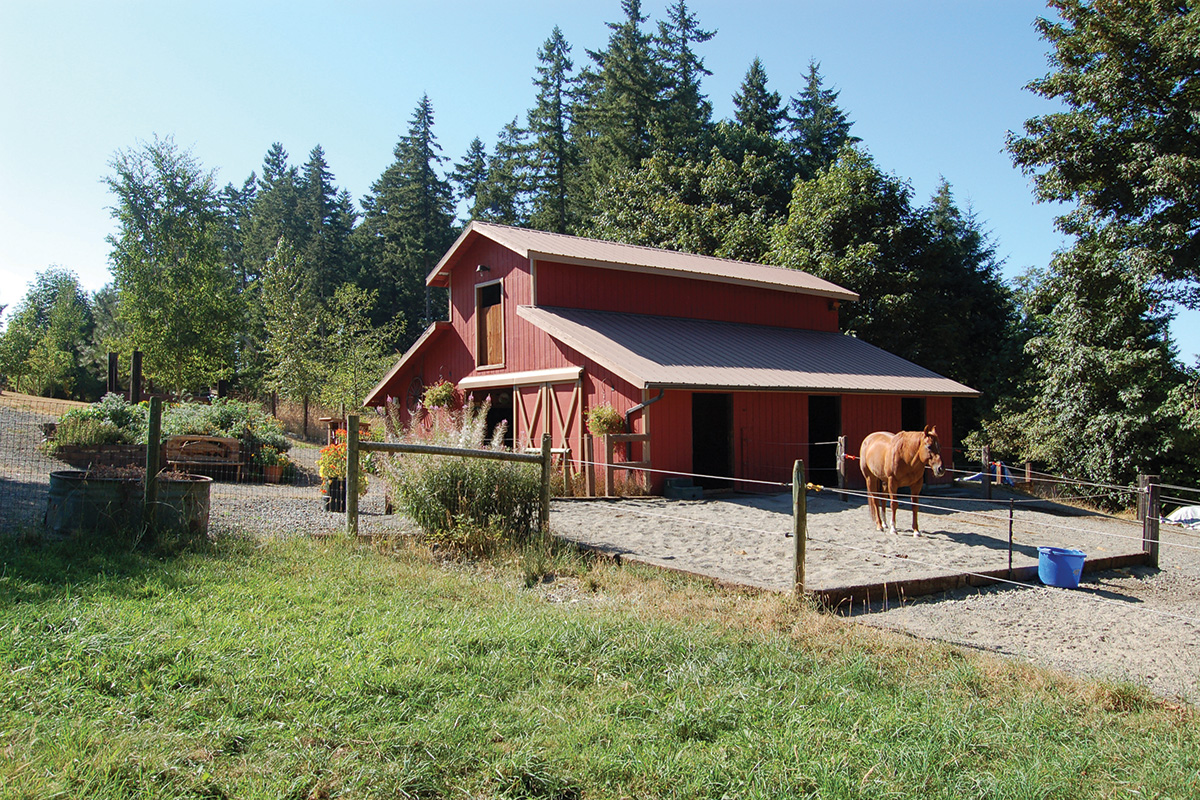
A good location for a confinement area is in a high, well-drained area that has chore-efficient access so it’s easy to feed horses and clean paddocks. Make sure that paddocks slope gently away from the stall or shelter for good drainage, and consider putting down some type of footing, such as crushed rock or coarse sand to help prevent erosion and mud.
A good location for a confinement area is in a high, well-drained area that has chore-efficient access so it’s easy to feed horses and clean paddocks. Make sure that paddocks slope gently away from the stall or shelter for good drainage, and consider putting down some type of footing, such as crushed rock or coarse sand to help prevent erosion and mud.
Implementing a regular manure management program will help prevent a buildup of muck as well as getting a source of compost lined up for your pastures.
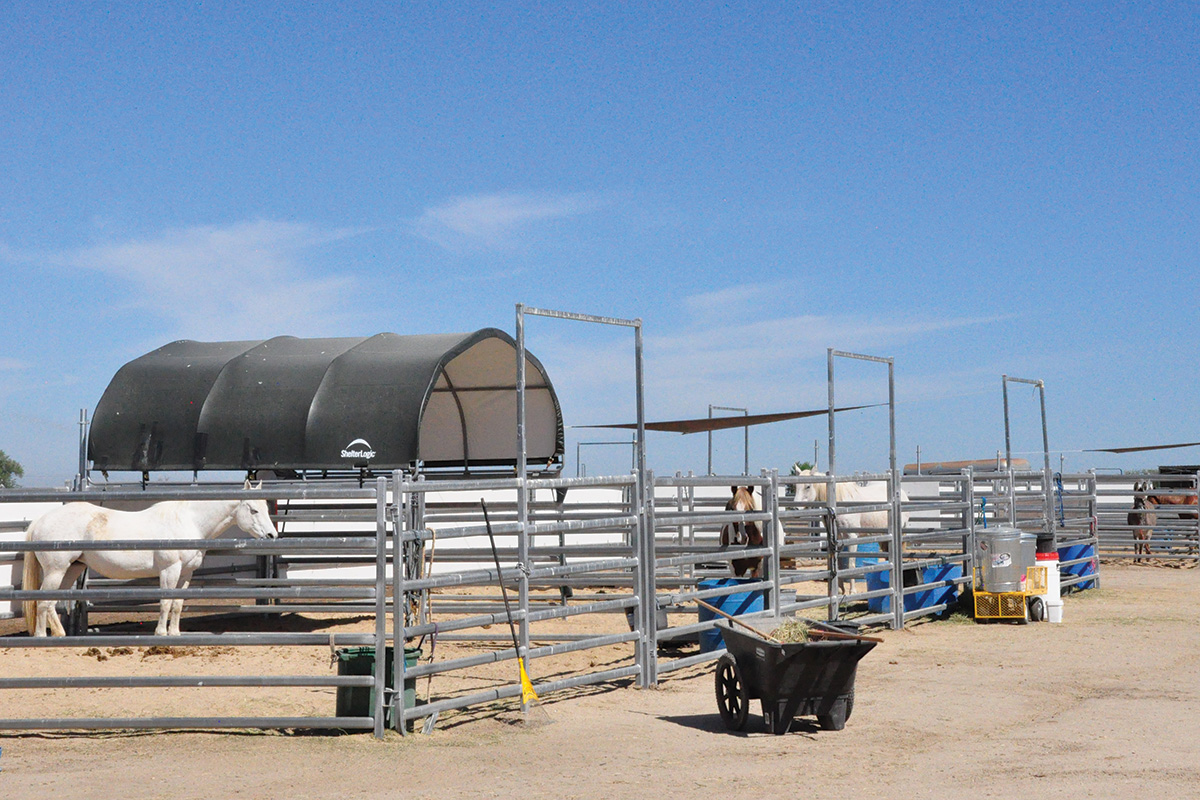
2. Give Pastures Time Off
One of the key tenants of pasture management is the time you keep horses off the pasture. Saturated soils and dormant pasture plants simply cannot survive continuous grazing and trampling.
When soils are wet, they are easily compacted, suffocating the roots of grass plants. Over time, these plants die out and weeds and mud will take their place. A simple test for sogginess is to walk out by yourself onto your fields to see if you are creating a footprint as you go along. If so, you know it’s too wet and the weight of a horse will surely compact the soil.
Instead, wait until your pastures dry out more and try the foot-printing test again.
3. Separate the Wettest Areas
In the spring, you can let horses onto the higher dry areas first and save the wet areas until later in the summer when they dry out.
Temporary fencing using self-insulating step-in plastic posts and electric tape is best for something like this, as you can simply adjust the shape of your grazing areas as you need it.
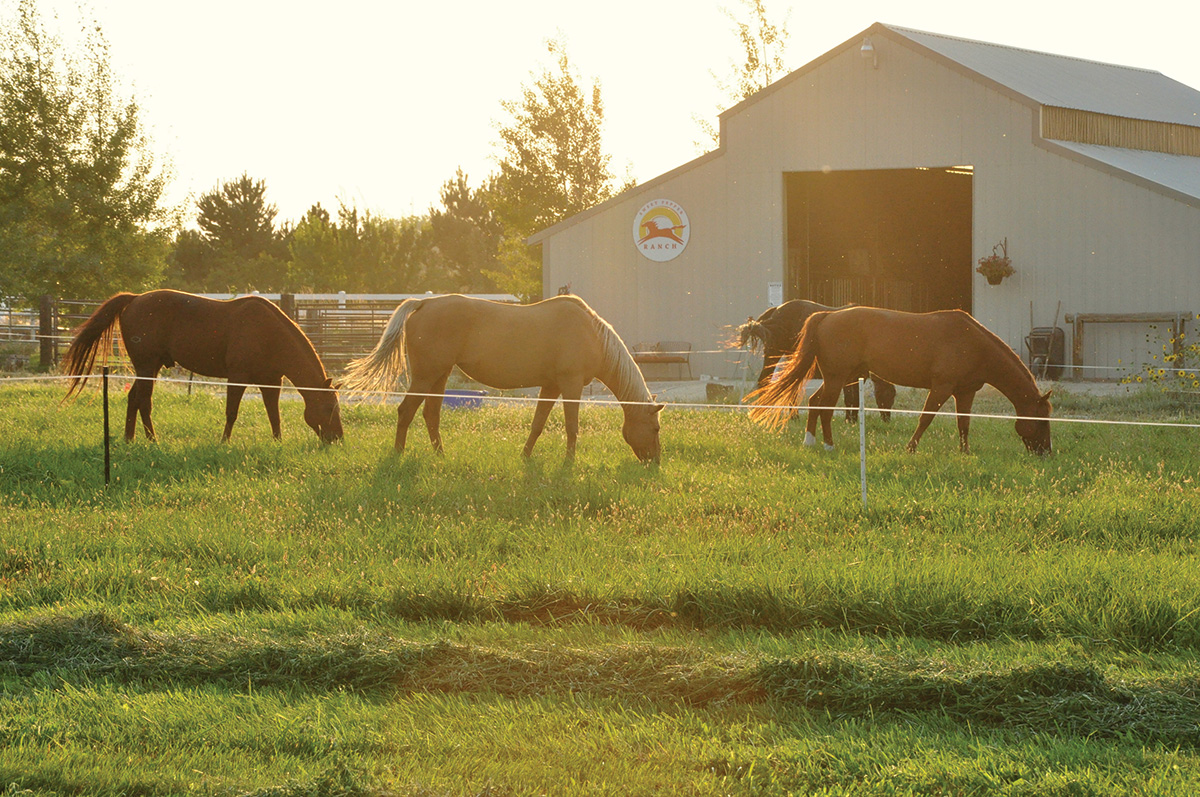
4. Apply a Green Band-Aid
Encourage a thick, healthy stand of grass by hand-spreading grass seed in areas that are bare or where grass isn’t growing as thick as you’d like. Otherwise, those same bare spots provide a growing site for summer weeds and can mean more mud next winter.
For most parts of North America, a mix of horse pasture seeds containing orchard grass, endophyte-free tall fescue, perennial rye grass and/or timothy work best. Warmer parts of the country should mix in warm-season species like brome.
For help selecting grasses specific to your region, consult your local conservation district, extension office, or the Natural Resources Conservation Service.
5. Test the Soil
Fertilizer is almost always overused—and may not be needed at all. Just because it’s spring doesn’t mean it’s time to fertilize. Applying fertilizer when your pasture grass doesn’t need it means wasted time and money, plus excess fertilizer will most likely be washed into nearby streams or lakes, or it can seep into ground water.
The best way to find out if your pastures need to be fertilized is to do a soil test. By finding out what your soil needs, you will be able choose a fertilizer with the right amount of nitrogen, phosphorous, and potassium. Fertilizers high in nitrogen may not be what your grass plants need in the spring. Nitrogen promotes plant top growth, which grass plants are already doing vigorously on their own.
Do an Internet search to find soil testing labs or reach out to your local conservation district, Natural Resources Conservation Service office, or extension office for advice on the best way to take a soil sample. If you find that you need to fertilize, fertilizing in mid-spring and/or late fall is usually sufficient.
6. Spread Compost
Once soils are no longer saturated and you are able to drive equipment out on your pastures without risk of compaction, do your horses and pasture a favor by spreading compost. The many micro and macro nutrients, organic material, beneficial bacteria, and fungi in the compost will help your grass plants become more productive.
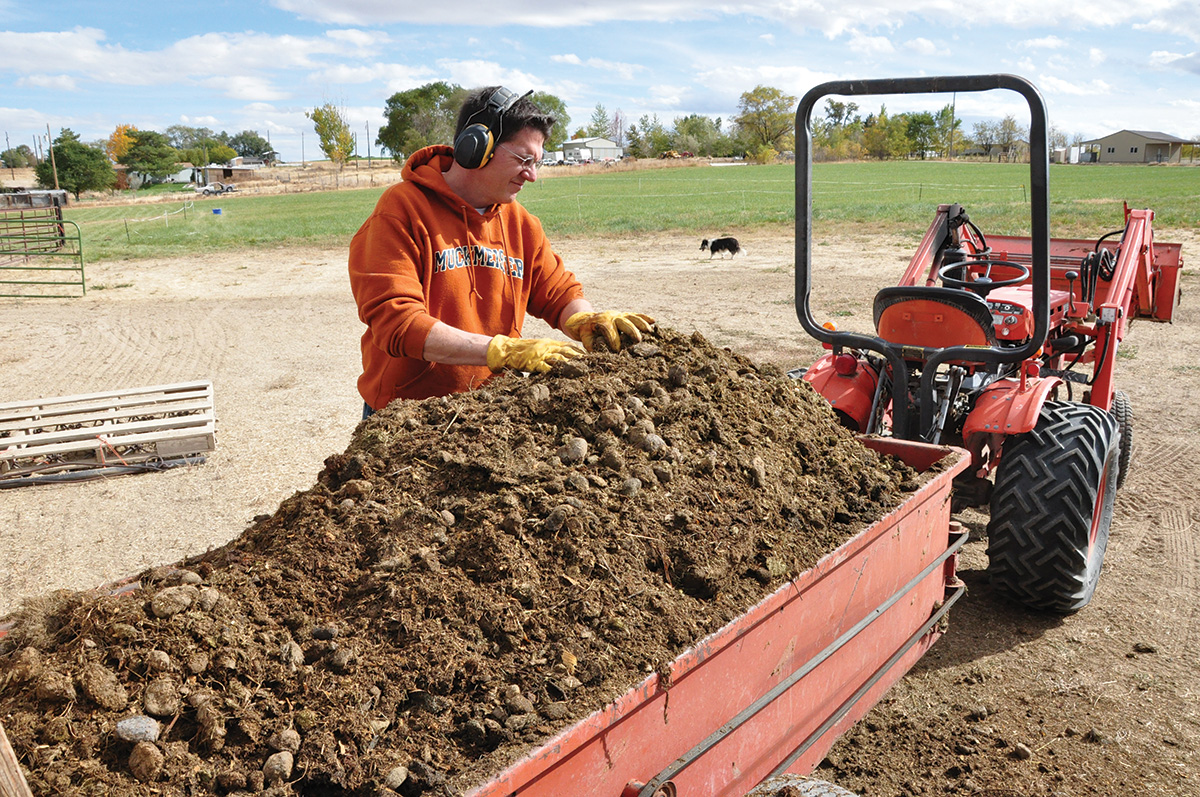
Spread a thin layer, approximately ¼ to ½ inch thick, and no more than about 3 to 4 inches total in the same area per season. Compost can be spread by hand or with a manure spreader. Go back through with a harrow (a drag) to break up clumps and spread compost thinly. If you don’t own a harrow and tractor, use a garden rake and go through by hand, raking thicker areas so plants aren’t smothered with compost.
7. Introduce Grazing Gradually
Once horses begin grazing pastures again, limit turnout time. Too much spring grass can cause very serious digestive issues when the microbes in a horse’s gut are not yet adapted to the diet change. Start with about an hour at a time and work up to several hours over a period of weeks. For additional questions on how much grazing time is safe for your horse, consult your veterinarian.
Also be careful not to allow your grass to be grazed below about 3 to 4 inches in height. The most concentrated sugar (the plant’s food source) is in the bottom few inches of grass plant. Above that is the more fibrous portion of the plant, which is healthier for a horse to consume. It’s also detrimental to the grass plant to remove its food source.
Let grass plants grow to 6 to 9 inches in height before turning horses out on them, and remove horses from any area once it is grazed down to 4 inches.
We are all excited to see green pastures in the spring. Prioritizing good maintenance of them will help ensure their health this coming summer, which makes for happy horses.
This article about spring horse pasture maintenance appeared in the March 2023 issue of Horse Illustrated magazine. Click here to subscribe!



